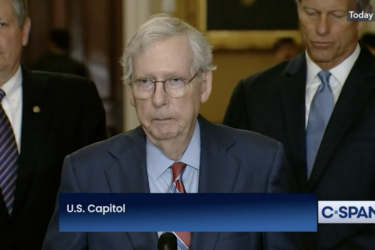
Much of the local news over the Independence Day weekend focused such as fireworks safety, beach traffic, flags and parades. But a brief article by Samuel Johnson, the public information officer of the Baltimore Fire Department, caught my attention — and had nothing to do with the holiday.
Many budget-crunched municipalities have been forced to cut back on essential services, such as police and fire personnel. Some firehouses have even closed. That increases the risk for everyone who lives near one — especially older adults and particularly in the summer months.
Adults age 65 and older comprise about 13 percent of the U.S. population but between 2007 and 2011, the rate of those 65 years and older who were killed in home fires rose from 19 to 31 percent, according to the National Fire Protection Association. Cooking equipment was the leading cause of home fires and injuries from them. Smoking was the leading cause of home fire deaths; one-third of the fire deaths and 15 percent of the injuries in the 65 and older age group were linked to smoking-related fires.
Home oxygen use, physical disability and possible drug or alcohol impairment (including opioids) were other leading causes of fire deaths and injuries among elders. Slower reflexes and lack of mobility to escape a fire also contribute to a higher fatality rate.
Another frightening statistic: in 2014 saw 3,275 fire-related deaths and approximately 15,575 injuries. Nearly six thousand of 19,000 victims — nearly a third — were age 65 and older. Can a direct connection between budget cuts and more fire deaths among older residents be made? Many local fire departments seem to think so.
Older adults frequently suffer from hearing and vision loss. They also lose their sense of smell and some are suffering from cognitive decline. These physical impairments can affect their ability to smell smoke or food burning on the stove, hear smoke detectors or see clearly enough to escape their home in a dark and smoky environment.
Johnson pointed out that environmental safety checks may be critical to safety. Older homes in particular may have outdated or faulty wiring, appliances that may overheat or spark, or furniture and clutter that may block doors and windows.
In case of a fire emergency, seconds can mean the difference between life and death. Family members may want to consider installing newer devices to supplement standard smoke alarms with strobe lights, bed shakers and additional alerts beyond a high-frequency smoke detector alarm. Test alarms frequently and change batteries at least twice a year. Keep furniture, rugs and other trip hazards away from doors and windows.
This article highlights the need for senior-specific fire safety initiatives — especially in light of recent multiple fatalities of older adults in house fires in the Atlanta area. And this story looks at how one North Carolina fire department relies on a fire dog named Cinder to draw a crowd so its fire safety educator can deliver theses important messages.
Budget cutbacks may mean longer response times or fewer fire personnel for search and rescue. Ramping up elder-specific fire safety programs can help fill an urgent void.
Here are some issues for journalists to explore when localizing this story:
- Have budget cutbacks closed any firehouses? What has it done to response times and personnel?
- What elder-specific fire safety programs are available in your community? Are there community organizations that step up to fill voids?
- What new/different safety features or equipment is available to aid older adults who may have difficulty hearing or seeing?
Here are some places to look for relevant data for your comminity:
- Check your town or city fire department for local statistics.
- NFPA Fact Sheets — includes demographics, geography, sources, and locations
- The S. Fire Administration collects data from various sources









